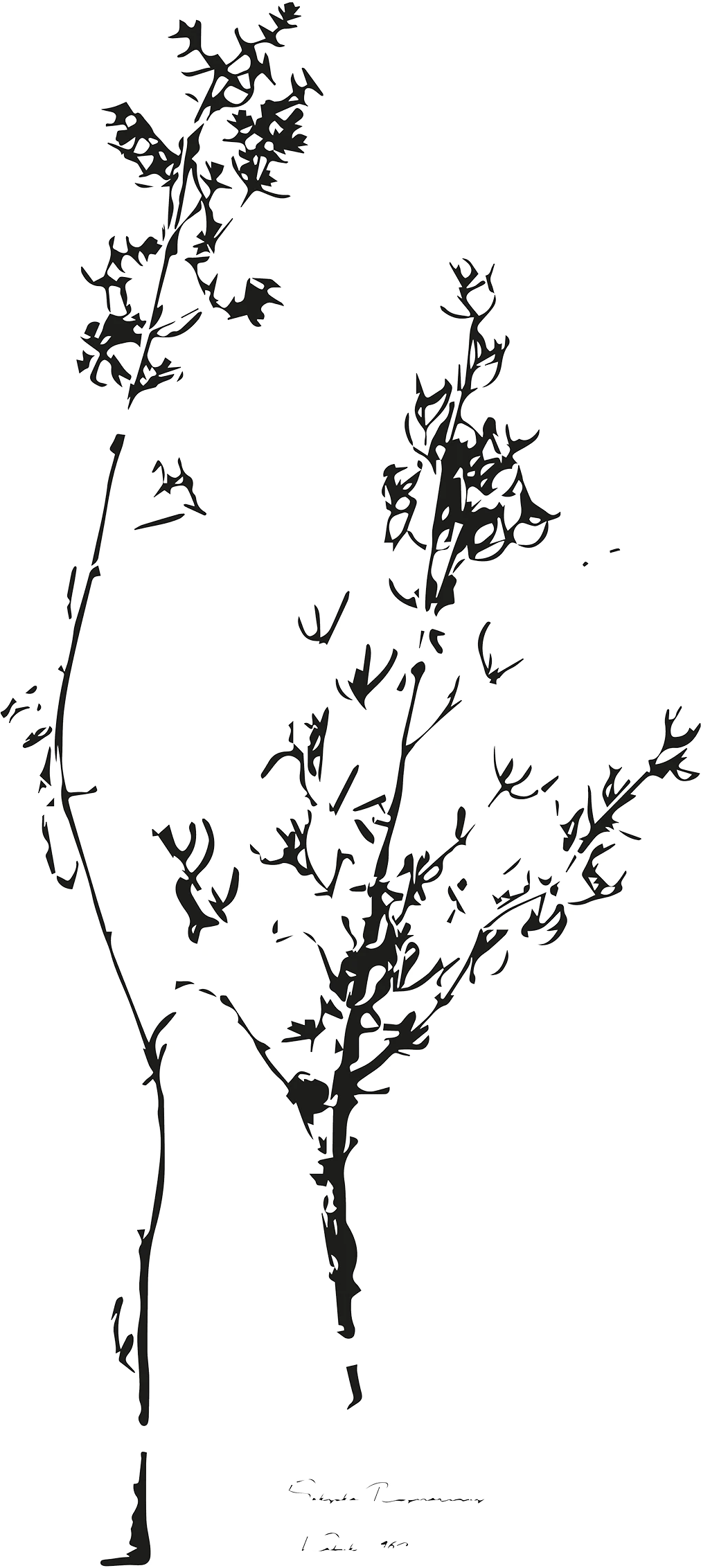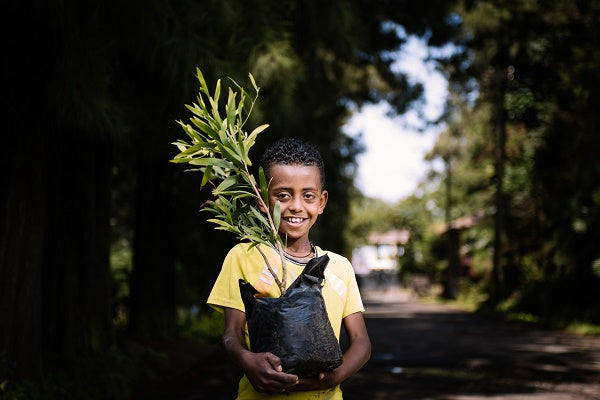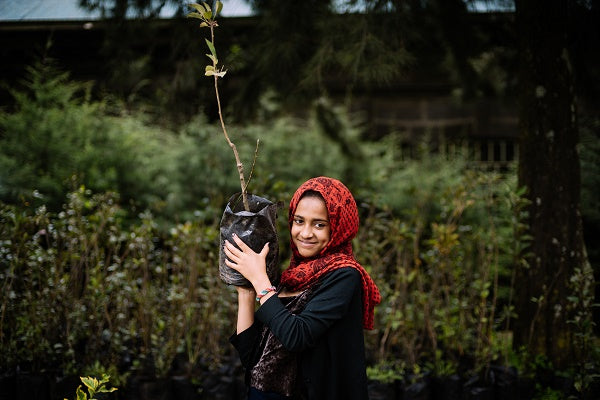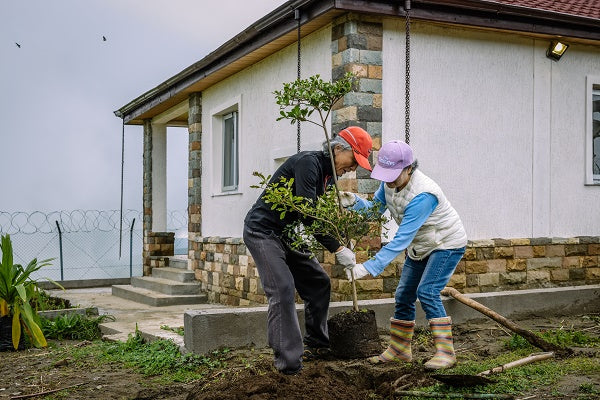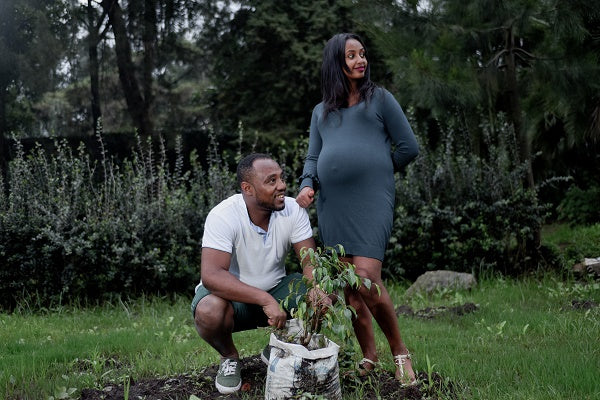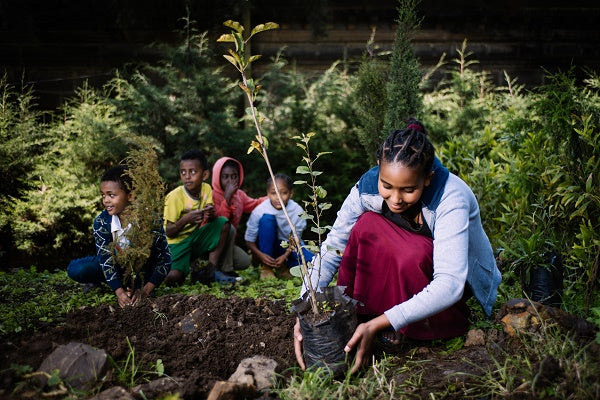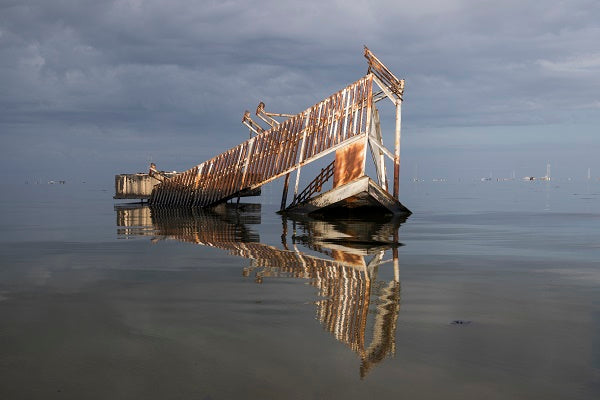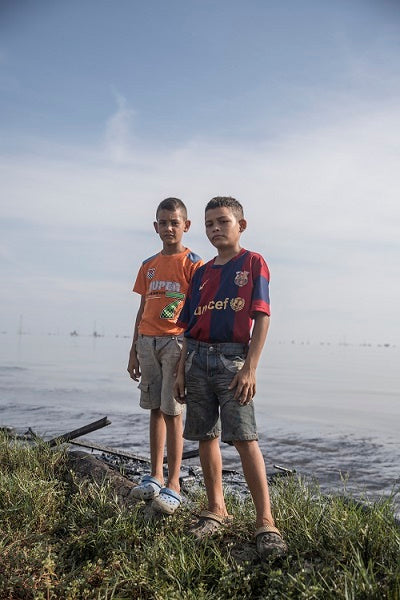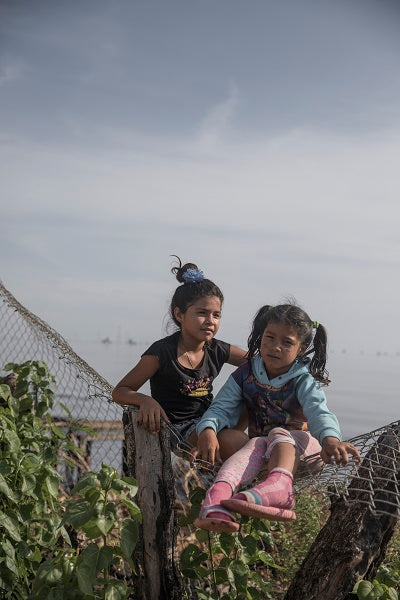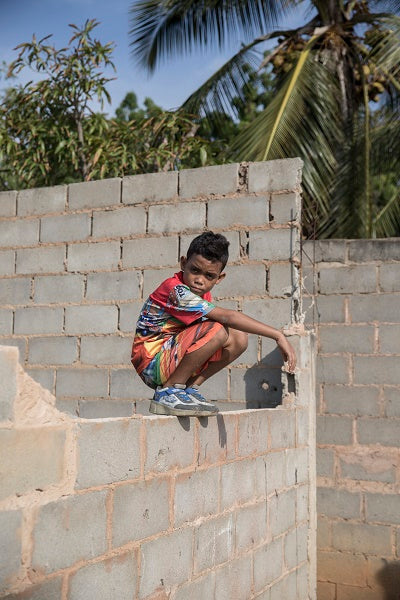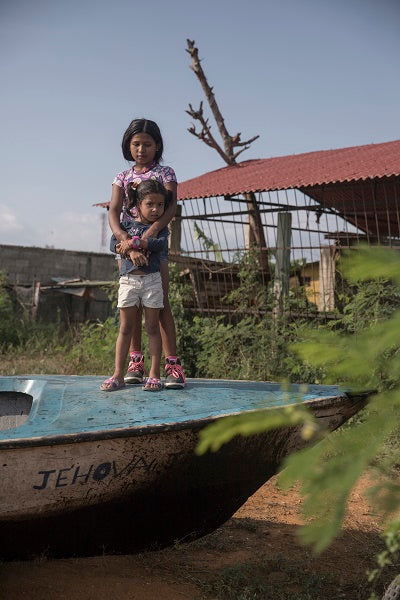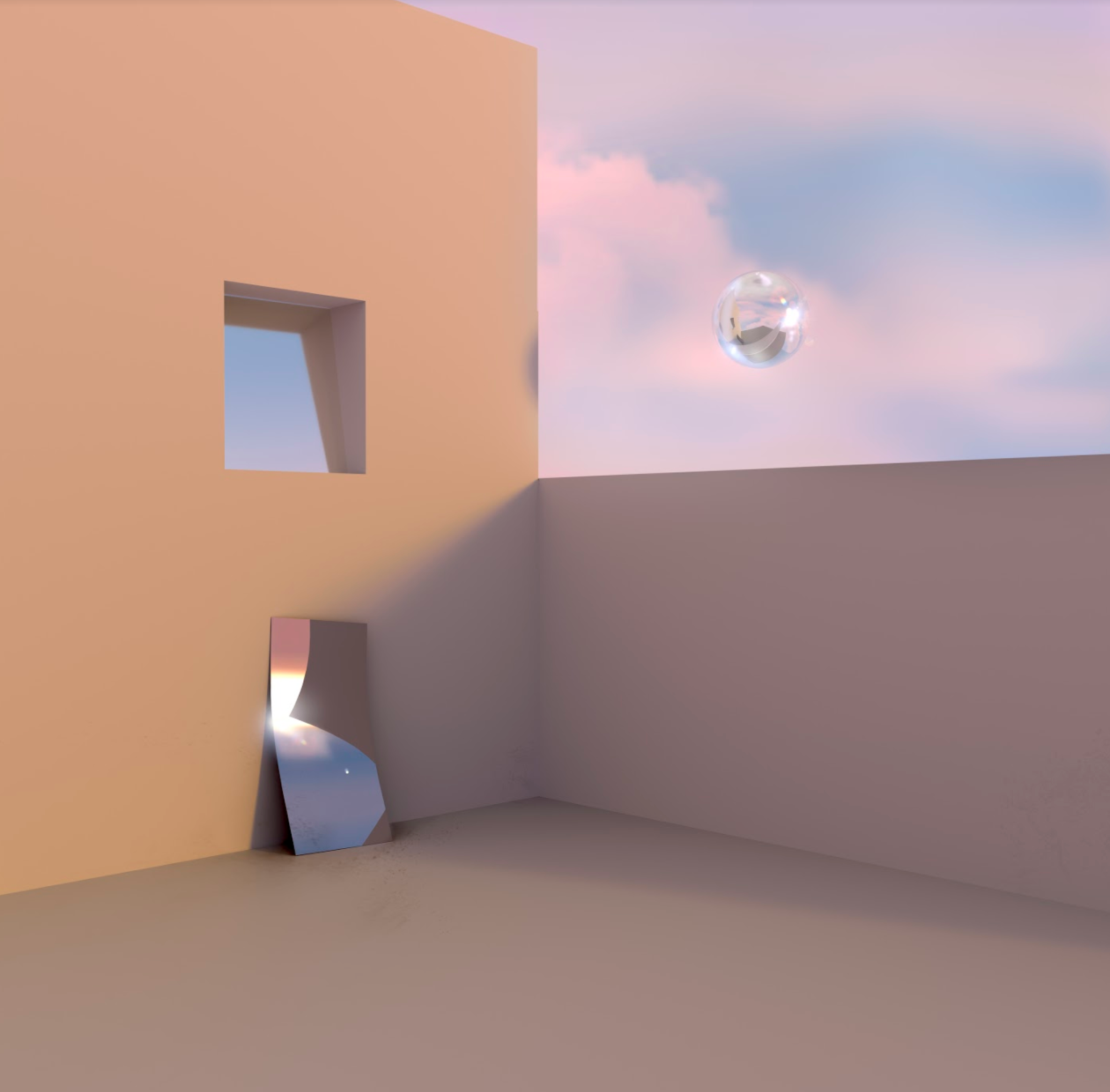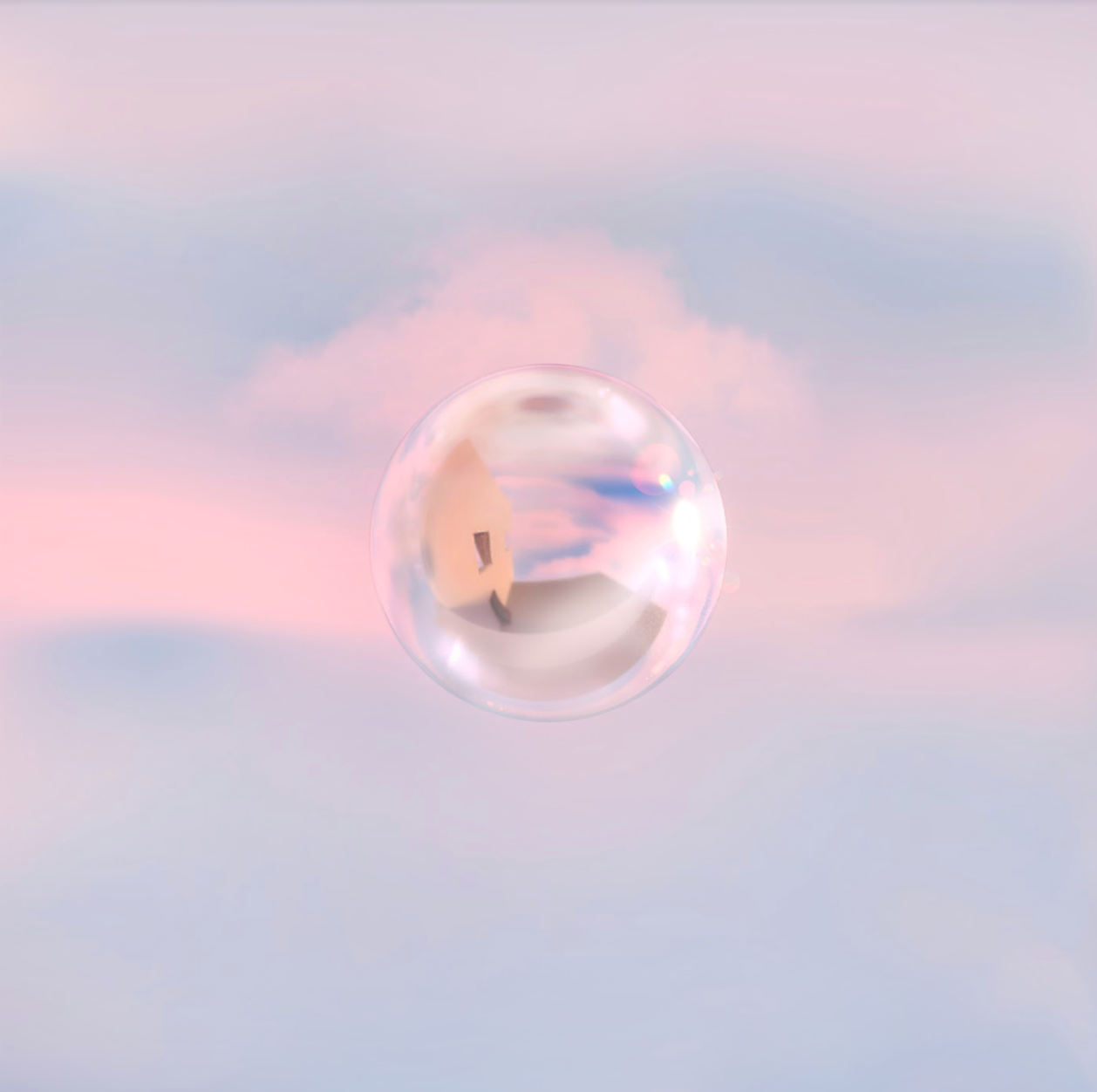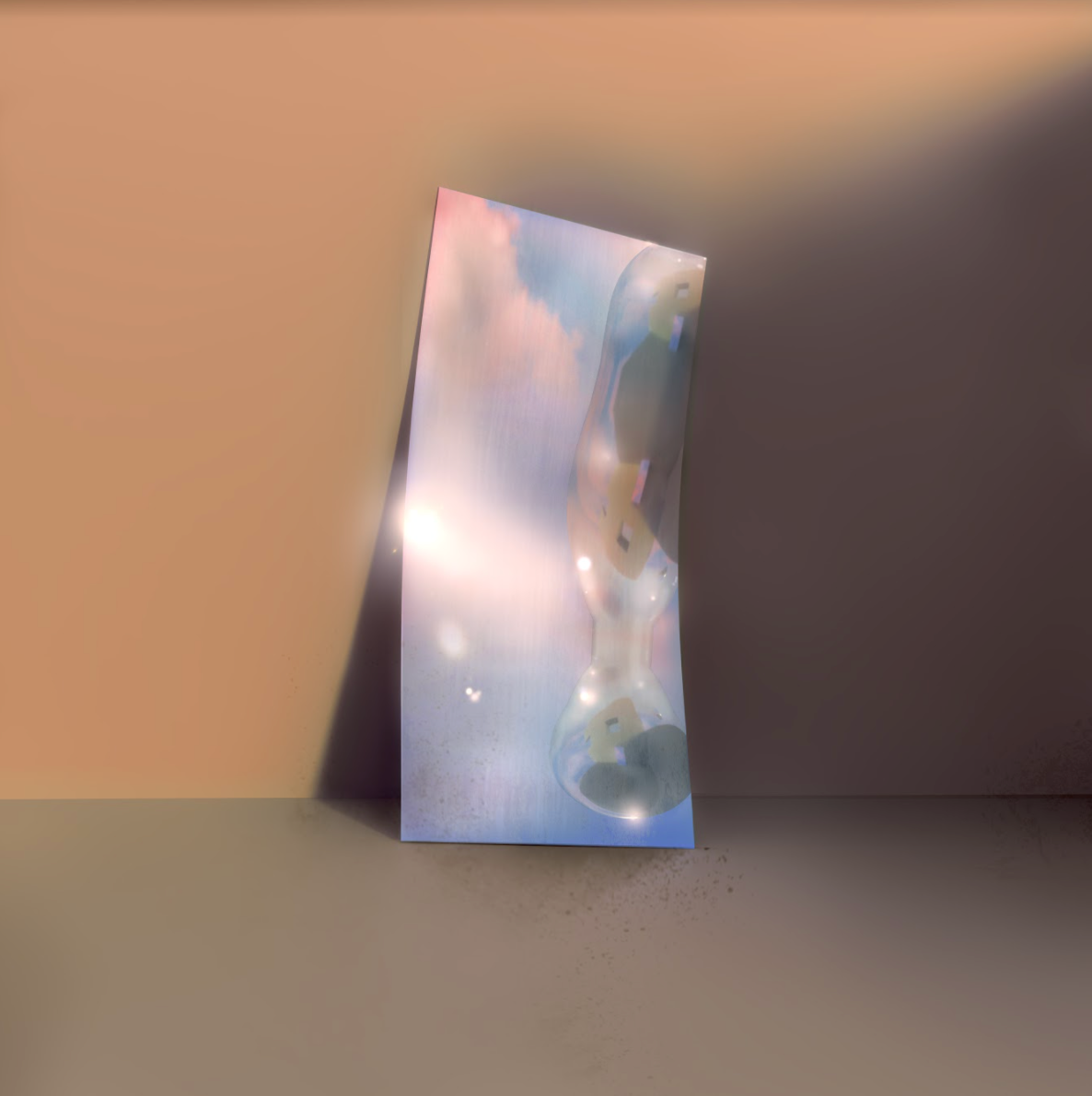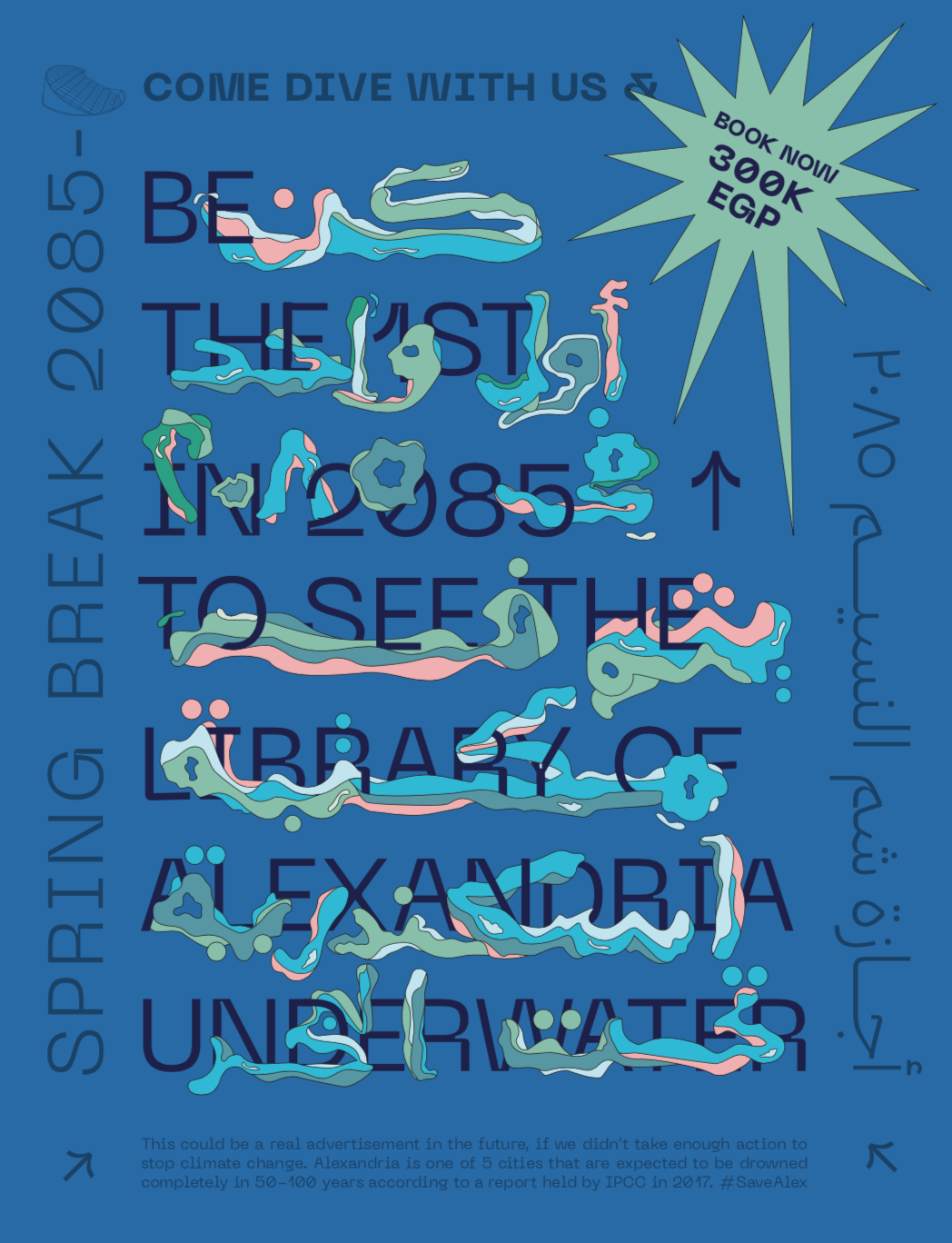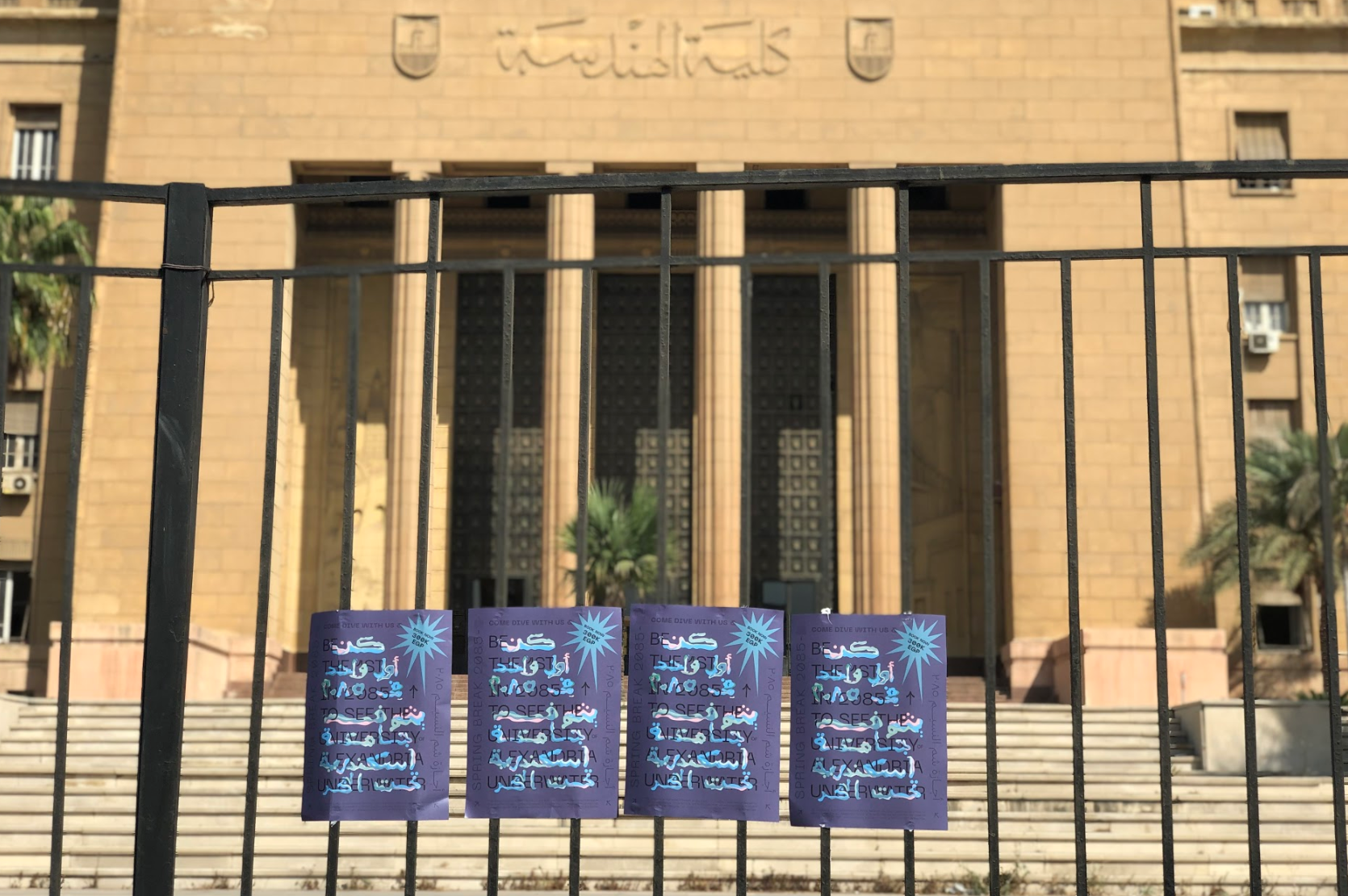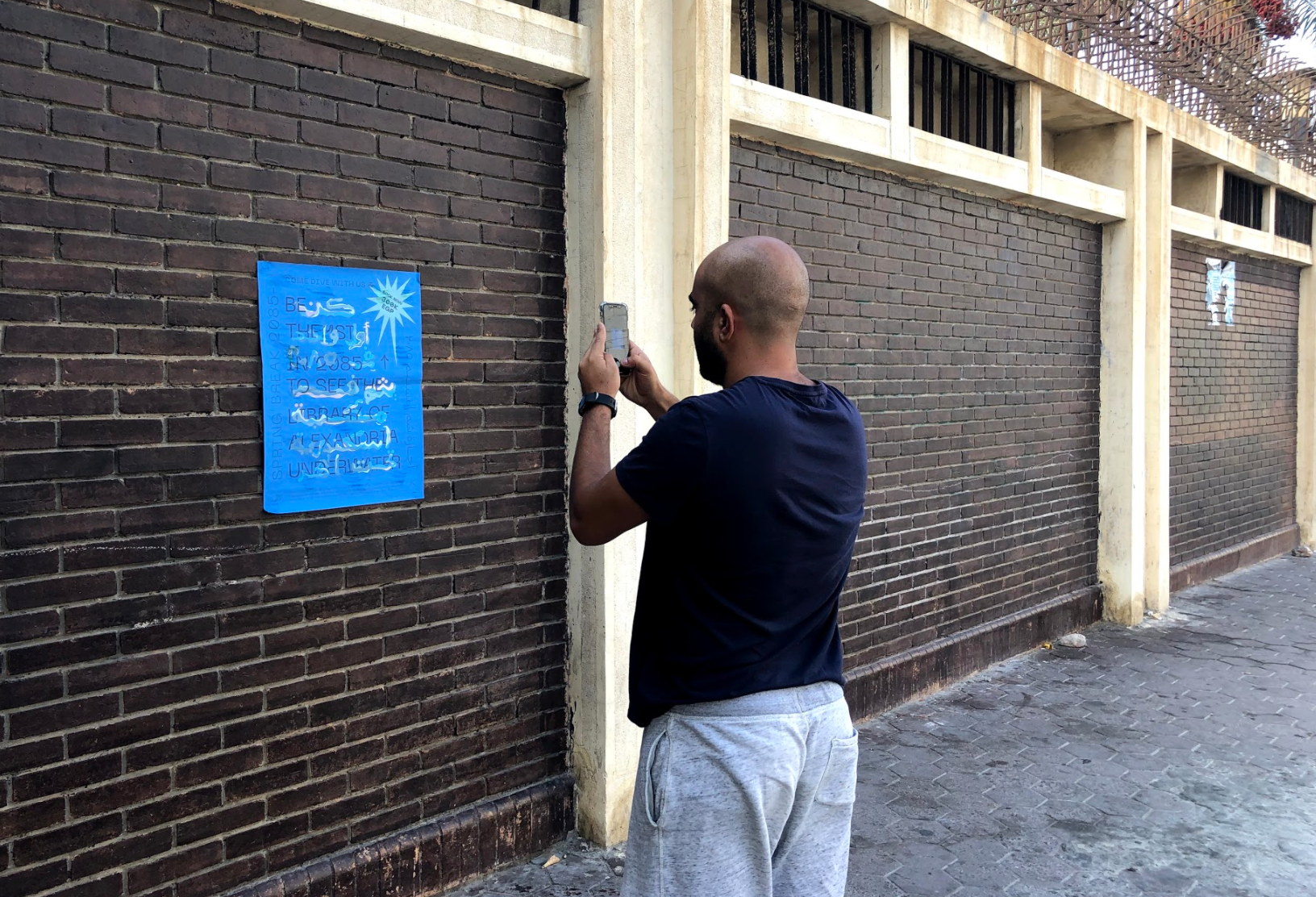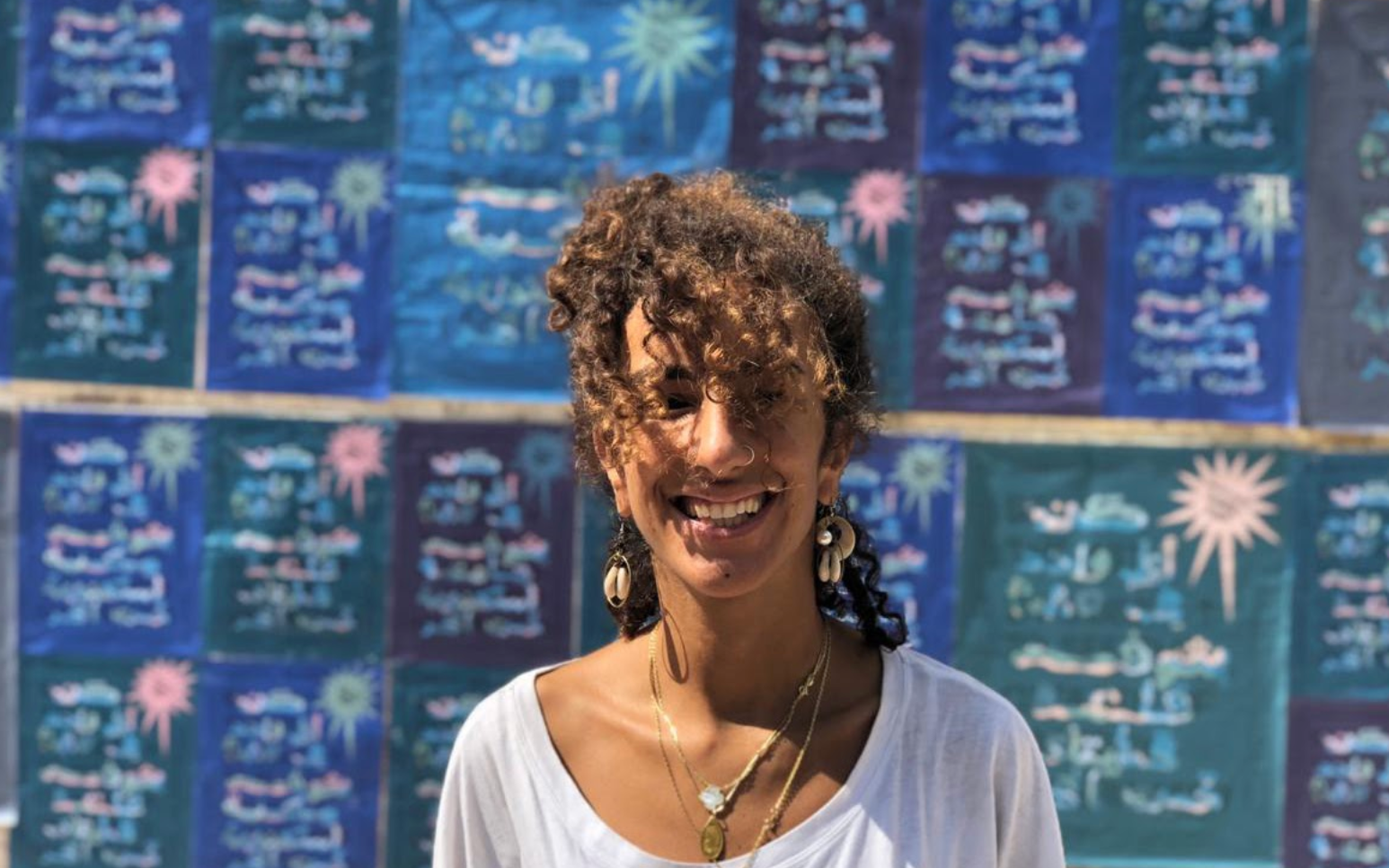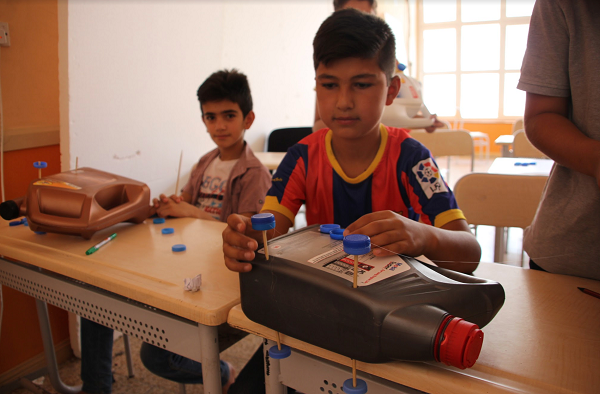Un Live X Ishkar
Artists Imagine a Future
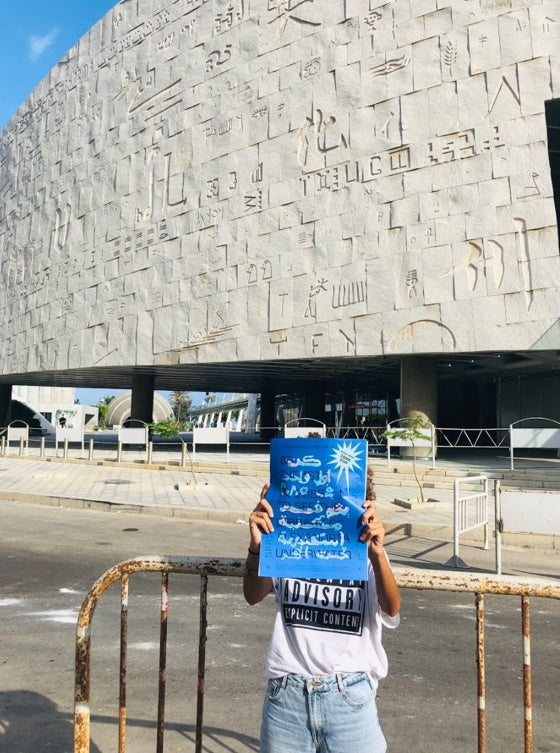
Fig 1 Nora Aly, out side the University of Alexandria.
Throughout history, art has proved one of the most powerful and effective tools for communicating difficult, complicated, or controversial subjects. Artists play hugely important roles at the heart of our communities and society - as public voices, changemakers, influencers and inspiring voices. Their work not only helps us reflect on our past, it helps us imagine different futures.
We were honored to be the chosen curators of the Museum for the United Nations’s first exhibition: ‘My Mark: My City’ a campaign aiming to galvanise climate action with a positive vision of what sustainable cities of the future could, and should look like.
For this project we commissioned a series of experimental new works by emerging artists often working in difficult contexts. Providing each artist with small grants to develop their practice and an international platform to grow their careers It is our hope that these artists will continue to use their voices in global debates about our collective future.
DISCOVER
Scroll down to see some of the incredible work that was exhibited:
ABEL GASHAW, ADDIS ABABA, ETHIOPIA
Abel Gashaw is an Ethiopian photographer based in Addis Ababa. For My Mark: My City, he chose to document “Green Legacy”, an ambitious tree planting project led by Ethiopian Prime Minister Abiy Ahmed. The campaign has split opinion, with sceptics arguing that the number of trees planted is a miscalculation. Abel wanted to capture the difference in opinion, but his overall impression was optimistic: “Despite the problems, this is the first mass planting campaign in Africa and paves the way to amazing solutions to keep cities green and combat climate change.”
PAULA CORTAZAR, NUEVO LEÓN, MEXICO
Paula Cortazar is a Mexican sculptor from Monterrey, Nuevo León. Here, huge limestone quarries – used for making concrete - are left open to the elements, allowing particulates to cause pollution in the nearby city.As a symbolic gesture for My Mark: My City, Paula made a copy of one of the rocks in the quarry out of concrete and returned both the original rock and the concrete rock to its original location. As she says, “now is the time to give back - after all the resources we’ve taken - and for the city to contribute to preserving nature
HFACTOR, LAGOS, NIGERIA
hFACTOR is a collective based in Lagos, Nigeria that uses creativity to solve problems facing Lagos island. For My Mark: My City, hFACTOR engaged with local Lagos residents through the tradition of “masquerading”, resulting in a performance piece and video that tackles the issue of plastic waste and recycling.
ZENA SABBAGH, ALEPPO, SYRIA
Climate change produced a drought that contributed, or at least aggravated, Syria’s civil war that forced Zena Sabbagh to flee in 2012. Originally from Aleppo, Zena is now based in Beirut, Lebanon, where she has established her own textile atelier. Although her home city has been torn apart, Zena used Aleppo as her subject for the UN Live exhibition. Zena patched together the city of her dreams: decorating the ancient citadel with trees and birds with intricate embroidery. The making process was very therapeutic.
FABIOLA FERRERO, CARACAS, VENEZUELA
Fabiola Ferrero is a Venezualan photographer based in Caracas. For My Mark: My City, Fabiola visited Maracaibo, Zulia where she hosted an artist workshop with environmental expert Marcelo Monnot. Their aim was to engage local children with the issue of water pollution in the lake next to their homes (which is so heavily polluted that local residents find crude oil in the water they use for showers). The children turned the oil into an artistic tool, using it as a medium to create pieces of art about their hopes for the future. The participants then discussed ideas for what they might do collectively to prevent further pollution.
AFRAA AHMED, KUALA LUMPUR, MALAYSIA
Afraa Ahmed is a Yemeni multimedia artist and graphic designer now based in Malaysia. Inspired by two cities she knows personally - Shibam in Yemen and Kuala Lumpur in Malaysia - Afraa has designed a digital triptyque that pairs geometric urban forms with natural elements. Fittingly for My Mark: My City, she has captured the potential beauty and harmony that can result from the natural and built environment coming together.
DIEGO ORENDAIN & PEDRO MARTINEZ NEGRETE, MEXICO CITY, MEXICO
Diego and Pedro are artists working with sound out of Mexico City. For My Mark: My City they created a composition that uses recordings of extinct birds, paired with visual graphics. Drawing on archival recordings, they then manipulated the soundwaves so as to emulate the sound of different alarms and sirens - sounds that are directly associated with city life, and which are aimed at humans only. The work asks city residents to think about how our industrialised, urban lives have wrought havoc on the natural world, and how we might rethink our way of living.
NORA ALY, ALEXANDRIA, EGYPT
Nora Aly is a Egyptian graphic designer from Alexandria - a city greatly threatened by global warming and rising sea levels. For My Mark: My City, Nora designed a tongue-in-cheek series of posters promoting the first diving trips to the drowned city of Alexandria in 2085. The posters invited viewers to consider the real possibility of this happening, and started conversations that played out on the streets of Alexandria between members of the public and Nora.
ALDO ÁLVAREZ TOSTADO, SAN PACHO, MEXICO
In recent years Aldo Álvarez Tostado has noticed how climate change and tourism have combined to disrupt public nature reserves in his hometown of San Pancho, Mexico. For My Mark: My City he created an installation of a barbed wire “fence” at the water’s edge, close to a local tourist resort which has been illegally encroaching onto public land. The installation encourages visitors to reflect on how they have wanted to “own” and control the natural world.
NABIL MUSA & SAFEN MUHAMMAD
Nabil Musa, Iraq’s first “water keeper”, Kurdish environmentalist and freelance artist based in Sulaymaniyah. Safen Muhammad is the director of ART +, a cultural organisation training children across the region in art and environmental issues, based in Sulaymaniyah. War can incinerate natural resources. In the case of Iraqi Kurdistan these resources have been used as leverage and as weapons against local populations. Nabil and Safen hosted an event to raise awareness on water pollution at Kakay Falah elementary school in Sulaymaniyah. The children learnt how to create art from objects and reused plastic.




